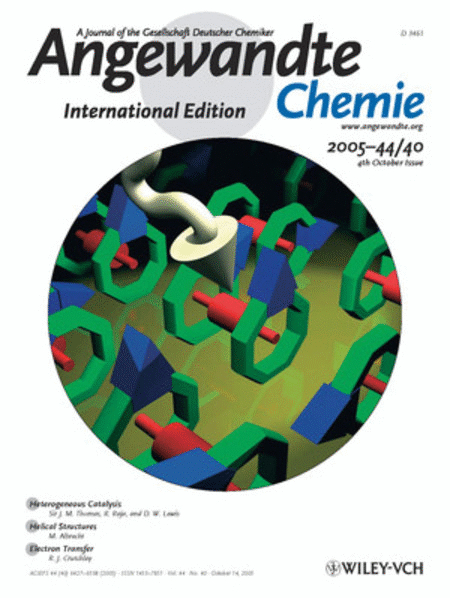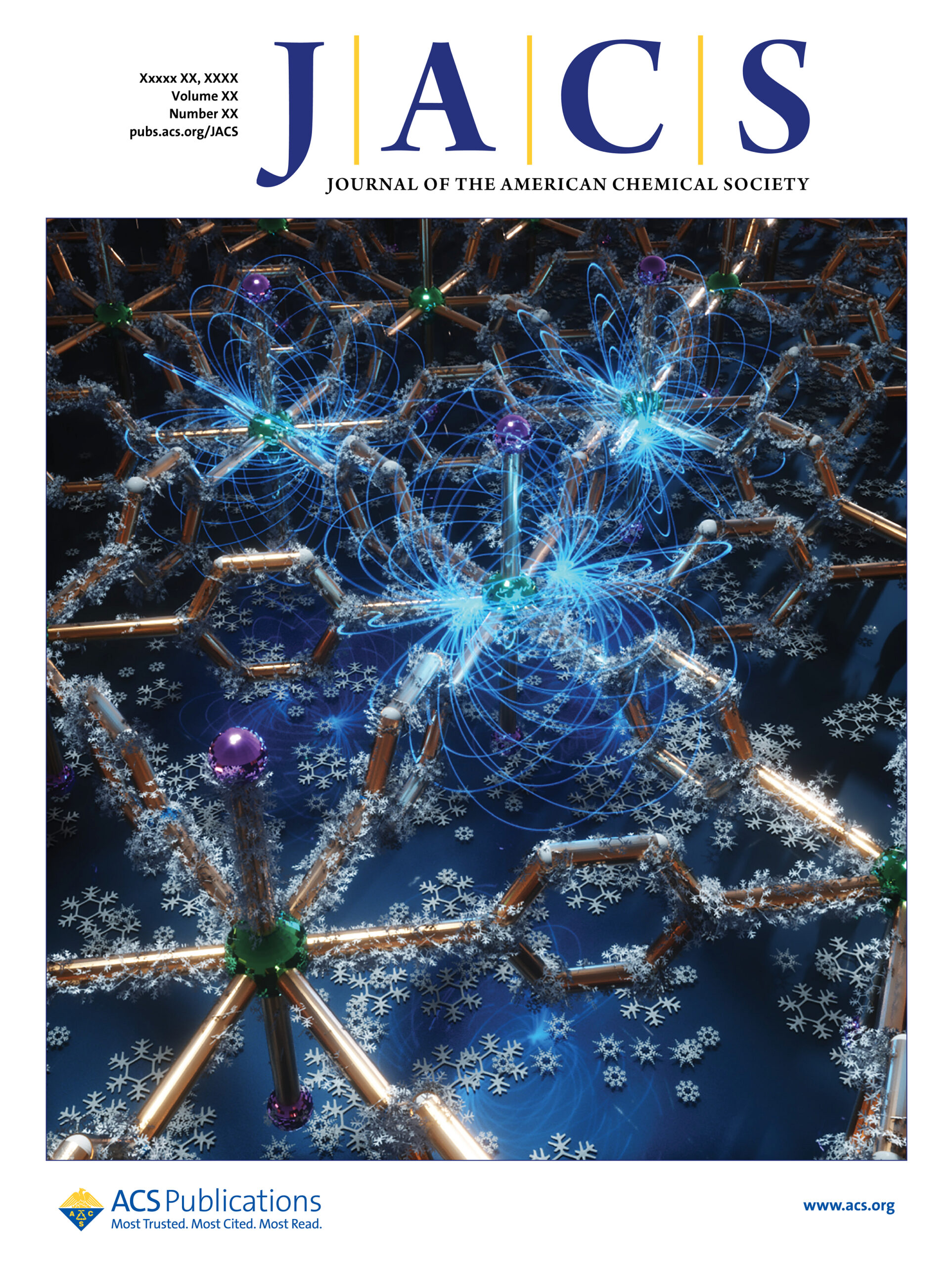Molecule-based coolant on a JACS cover
‘A Triangular Frustrated Eu(II)–Organic Framework for Sub-Kelvin Magnetic Refrigeration’ by Anna S. Manvell, Maja A. Dunstan, David Gracia, Jakub Hrubý, Mariusz Kubus, James N. McPherson, Elias Palacios, Høgni Weihe, Stephen Hill, Jürgen Schnack, Marco Evangelisti, Kasper S. Pedersen, Journal of the American Chemical Society (2025); https://doi.org/10.1021/jacs.4c17003
This work unveils a new design principle for dense magnetic refrigerants, leveraging symmetry control of lanthanide-based networks through molecular templation. The self-assembly reaction of Eu2+ with ditopic pyrazine ligands, in the presence of large Ba2+ ions, yields a structurally unique two-dimensional triangular tessellation of the metal ions. This structure, templated by a small concentration of heterometal ions, is unprecedented in reticular chemistry and has significant material consequences: (1) a unique coordination geometry with elongated Eu2+-ligand distances, which leads to (2) antiferromagnetic interactions and (3) easy-plane magnetic anisotropy, whose interplay promotes (4) geometric frustration of the electronic spins due to high crystallographic symmetry. Finally, (5) Eu2+ carries a large magnetic spin moment of s = 7/2, which has been central to the development of coolant materials for adiabatic demagnetization refrigerators. The long-sought goal of achieving high entropies at very-low temperatures is here accomplished through geometric frustration, allowing for cooling to temperatures that fall below the magnetic interaction strength. Demagnetization experiments reach temperatures as low as 0.17 K, while long-range magnetic order is anticipated to occur below 0.09 K, despite a Curie-Weiss temperature of 0.24 K.
These findings hold significant promise for applications in sub-Kelvin cryogenic cooling, a field that is gaining increasing relevance. This research not only enhances the understanding of f-block chemistry, magnetic frustration, and magnetic refrigeration but also outlines practical pathways for material innovation.


